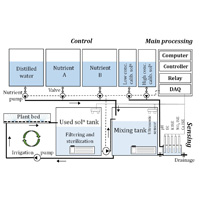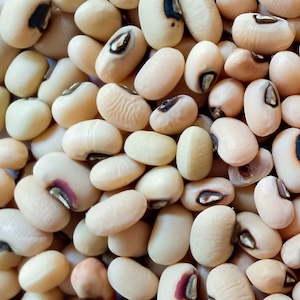Method of pump, pipe, and tank selection for aeroponic nutrient management systems based on crop requirements

All claims expressed in this article are solely those of the authors and do not necessarily represent those of their affiliated organizations, or those of the publisher, the editors and the reviewers. Any product that may be evaluated in this article or claim that may be made by its manufacturer is not guaranteed or endorsed by the publisher.
Authors
The system-specific selection of aeroponic nutrient system components, specifically pumps, pipes, and tanks, is very important to improve system efficiency and minimize costs, as these components vary for different systems with different crop water requirements and design specifications. In this study, methods were suggested for determining the most suitable sizes of pumps, pipes, and tanks based on the plant water consumption and irrigation interval targeted to improve the usual procedures to design an aeroponic nutrient management system, and applied to a case. Factors affecting the size calculation are discussed, and calculation methods were suggested based on basic hydraulic principles. A recycle-type aeroponic nutrient management system, cultivating 500 plants in 21 plant beds, was considered for a case study. Application of the size calculation methods in the case study showed that an irrigation pump with a 37 Lmin–1 flow rate at 900 kPa capacity and nutrient pumps with a 5 Lmin–1 flow rate at 40 kPa capacity with 19-mmdiameter pipes were required to deliver the mixed nutrients and supply stock solutions into the mixing tank, along with nutrient mixing, stock nutrients, and distilled water tanks of 750, 40, and 685 L, respectively. Calculation was demonstrated to show the variations in the sizing of the pumps, pipes, and tanks by number of plants. Validation tests were performed for the selected irrigation pump capacity, and the results showed that the Nash-Sutcliffe efficiency coefficient (NSE), coefficient of determination (R2), and root-mean-square error (RMSE) values were 0.410, 0.98, 0.109 Lmin–1 and 0.775, 0.99, 34.91 kPa for flow rate and pressure, respectively. The case study also showed that these sizing procedures increased the plant bed coverage efficiency of the irrigation pump by 33%, while increasing the nutrient mixing tank size by 133%. This study would provide useful information on the efficient sizing of pumps, pipes, and tanks for minimizing costs and maximizing crop production in aeroponic nutrient management systems.












